For the past three days I have been on safari in Tanzania, Africa, and both my mind and my soul are overflowing. My guide, Joseph, has retired to his tent for the night, exhausted from driving eight hours over bone-jarring, roughly graded gravel roads. My cook, Hamisi, has left me alone to write as he cleans up from our dinner. I momentarily look up from my notebook and realize that I can only see what is illuminated by the kerosene lantern on our camp table – a circle of light about three feet in diameter. Beyond that is complete and utter blackness.
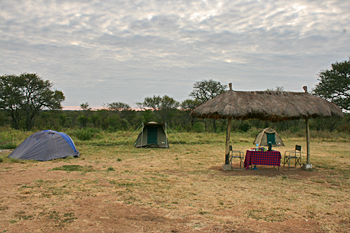
I step away from the table, which is set up under a thatch-roof shelter, and into the dark night. The sky is littered with stars – there are so many that it is difficult to identify specific constellations. I find Cassiopea’s Chair and Scorpio, then think I see Orion but can’t be sure because it is partially obscured by the luminous glow of the Milky Way that paints a wide swath across the sky. When a hyena howls in the distance I am reminded – uncomfortably – that Joseph and Hamisi have warned me not to leave my tent in the middle of the night – not even to go to the bathroom – because lions and hyena regularly prowl the campground at night.
I tell them I am 55 years old, for goodness sake, with a 55 year-old bladder that can’t last through the night. They insist I should wake them up if I need to use the bathroom during the night so they can accompany me. Pardon my ignorance, but wouldn’t waking them up entail leaving my tent to go in search of their tent in the pitch black? I make up my mind that if I have to ‘go’ in the middle of the night, I will unzip the tent flap and stick my bare butt outside, rather than endure the embarrassment of needing an escort.
My safari began following 17 hours of flights, layovers, bus rides, and an excruciating hour-long queue at Tanzanian Immigration, where, despite a bank of brand new computers, they filled out every form in longhand. Since then I have been making the circuit of Tanzania’s National Parks with my guides, beginning with Arusha National Park. Unlike all the other parks that prohibit leaving the car, in Arusha I was able to do a two-hour walk in the park, accompanied by a semi- automatic rifle toting park ranger.

We walked through tall grasses, within ten feet of a herd of giraffe. As we made our closest approach, two of the giraffe began performing their mating ritual, twisting their long necks sinuously around one another and doing the bump and grind with their hind quarters. Further into the wilds we slowly walked toward a herd of Cape Buffalo, said to kill more people in Africa each year than any other animal. Fortunately, they ignored us completely. Not so for the herd of Warthog we passed, who dashed toward us in a threatening display designed to scare us off. It worked – we hastily retreated.
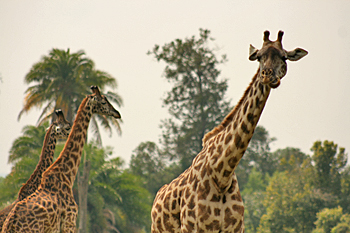
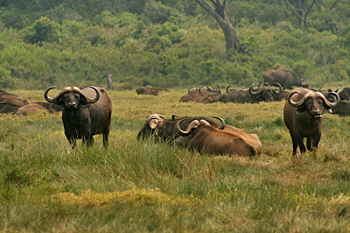
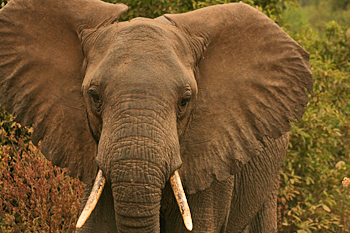
Day two brought us to Lake Manyara National Park, with its prolific herds of elephant. At one of these herds, Joseph was forced to throw the jeep into reverse quickly when a big bull elephant charged us – apparently we had approached too close for his comfort. When the bull no longer felt threatened he peacefully left the road and disappeared into an acacia tree thicket. Lake Manyara Park lies along the eastern edge of the East African Rift Valley, a 6500-mile long gash in the earth that runs from Jordan to Mozambique. Here, two tectonic plates sliding across one another caused the eastern landmass to fracture and sink beneath the western escarpment, creating a valley lush with vegetation and seven lakes.
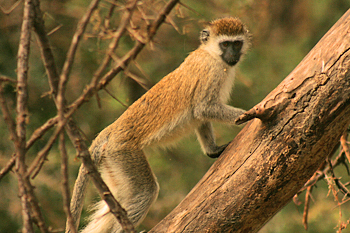
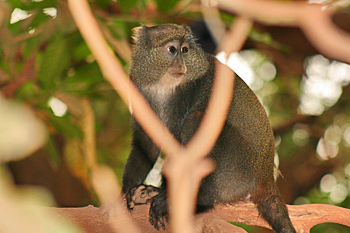
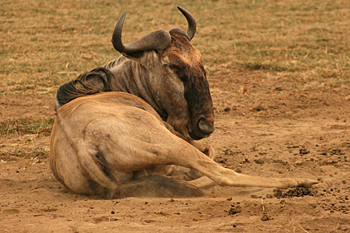

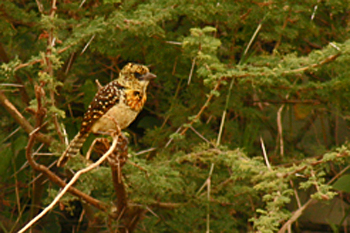
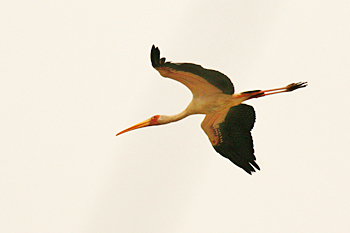
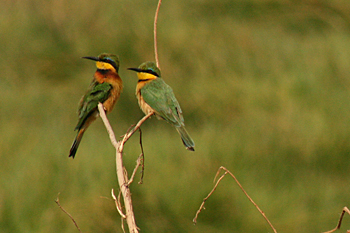

The park also supports families of baboon, one of which treated us to a ‘close encounter.’ We were leaving the park late in the afternoon when we came upon a family group crossing the road. We stopped to let them pass and were suddenly surrounded. Baboons by the dozens streamed out of the forest and walked down the road toward a waterhole, passing the car on both sides. We waited five minutes, then ten, and still they came. There were hundreds of them and in this concentration they were fearless. I was standing up in the jeep, my head sticking out the roof hatch, looking down at them. They, in turn, were looking up at me arrogantly, as if challenging me to make a move. Prudently, I did not – in fact I barely breathed until they finally left the road for the waterhole.
Following the baboon encounter we retired to our campground in the town of Mto wa Mbu – literally ‘Mosquito River’ – early enough in the afternoon that I was able to walk the streets and meet some of the local people. Sadly, the people would not allow me to take their photos unless I paid them, which I refused to do (most of the photos you are seeing here I captured “on they sly” or with a long telephoto lens, so the subjects were not aware they were being photographed; only a few, such as the lovely woman with the Tanzania scarf wrapped around her head and the man in the orange hat, both of whom willingly posed for me).
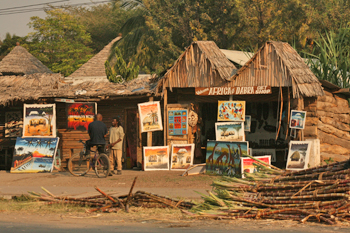
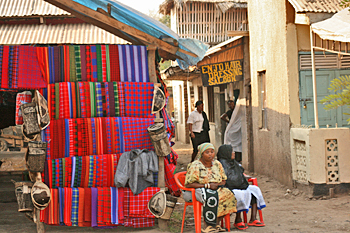
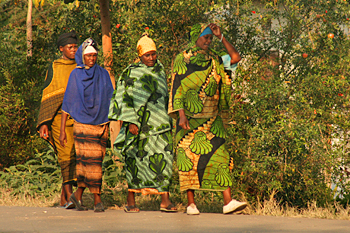
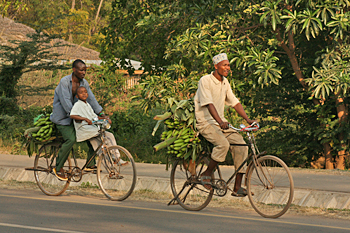
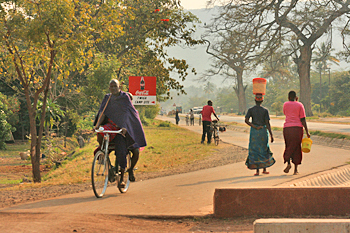
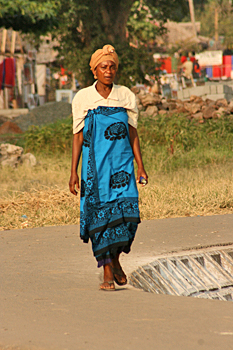
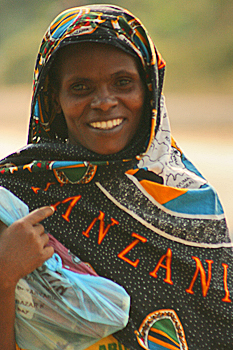
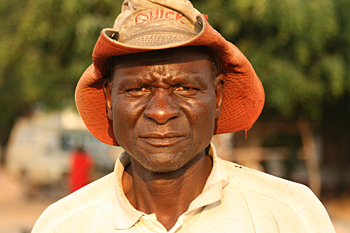

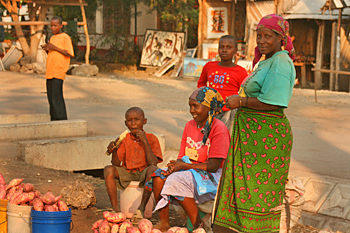
When this refusal to be photographed happened several more times I began asking around to find out why they were so adamantly opposed to photos. I found a young man named Nick, who spoke fairly good English, and posed the question to him. He explained that tourists are viewed as rich people who will take the photos back home and sell them. I simply couldn’t let this misconception continue so I selected a group of women selling red potatoes in the street in front of my campground who had earlier denied me permission to take their photos. Through Nick I explained that these photos were only for personal memories and to show my friends and family. I also explained that when people see my photos they will undoubtedly want to visit Africa, which means more tourism and thus more money for Tanzania. The women relented and I not only took all the photos I wanted but I made some new friends as well. When my jeep left the next morning they were all out on the street selling their buckets of sweet potatoes, waving goodbye and yelling “Karibu” – you are welcome.
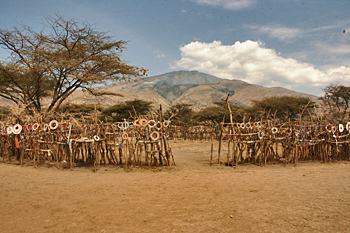
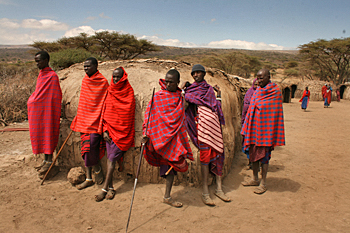
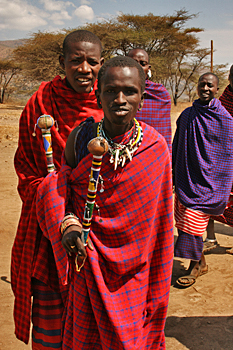
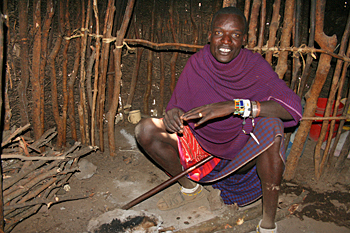
This morning we left early for Serengeti National Park, driving up and over the Rift escarpment to the 2800-meter (about 8400 foot) high rim of Ngorongoro Crater. Beyond the crater the pavement ended, replaced by a roughly graded gravel road. We jounced along its washboard surface for hours, traversing the Ngorongoro Conservation Area and traveling in a perpetual cloud of putty-colored dust that was kicked up as much by the safari jeeps traveling the road as by the winds sweeping across the plains.
In the middle of this abysmal landscape we stopped to visit a Maasai village, a round enclosure built of acacia tree branches, surrounding a circle of domed huts, also built of acacia and plastered over in cow dung to protect against the elements. The tribe welcomed me with a ceremonial dance and invited me inside one of the huts. I removed my backpack and bent low to get through the doorway, sitting on the cowhide covered platform that was offered to me as a seat but otherwise served as a bed for a family of five.
In the center of the hut was a smoldering fire fueled by cow dung; its smoke exited through a small hole in the roof. The Maasai culture revolves around their livestock, the number of cattle they own determining their wealth and status in the tribe. This being the case, I was curious to know if they ate their cattle, so I asked my host about the Maasai diet. He replied that they eat blood, milk, and meat – and, he added after a moment’s hesitation, blood. This is giving me serious second thoughts about the three-day home stay I have scheduled with a Maasai family following the safari.
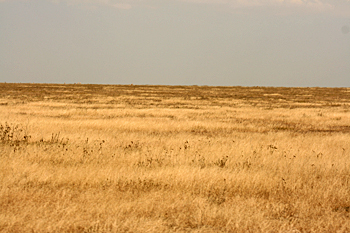
Some hours later we passed through a stone gate that marked the beginning of the southern Serengeti – an endless, featureless plain covered in dun-colored grass. This is the dry season and everything is dead or dying. It is remarkable to think that everything here will burst back to life once the rains come – more remarkable to think that animal life can exist in such a severe environment. But exist it does. During my first three hours in the park I have already seen a pride of lions, a leopard, and a cheetah. I can’t imagine what more is in store for me during my all-day Serengeti safari tomorrow – that is, if I don’t get eaten by a lion tonight.

good stuff i read here, thnx for visit my africa. as a guide in kenya, i feel pleased when one talks about safari, wildlife and nature. May be you can look for my story about safari guiding in kenya on, Maitravellsite. Its called A day in the life of a safari guide. Thnx for posting.
wow, that looks like an amazing trip. So much beautiful wildlife. How hard was it to get these photos.
Jason: I used a telephoto lens, but it was remarkably easy to get the shots. We were so close to the animals at times that it was amazing.
I love your blog! Thank you for all your great information and photos.
I love the pic of the group of baboon traveling in one direction. Hope you don’t mind I use that pic on my blog. I did give you credit and linked the photo back to your blog.
Check out the blog post if you want. http://theprancingpapio.blogspot.com/2009/10/behavioral-synchronization-in-chacma.html
When i went on a Kenya Safari, i had the pleasure of seeing all of the big five, i was told that this was a rare experience. After visiting the Maasai Mara, I was in two minds about going to the Serengeti, after reading your story, i have made my mind up to go 🙂
Mark
Mark:
I am sure you will not regret going to the Serengeti. It was so much more unique than anything else I saw – those endless plains are astounding. And yu have to go right past Lake Manyara, up and over the East African Rift, and travel along the rim of Ngorongoro Crater to get there. Happy travels!
Loved following this story. Even better you have photos to show us makes it feel like we are with you.
Jill xx
Those photos are really beautiful. They are amazing and your safari must have surely been a wonderful experience. It has made me eager to go on an African safari. Glad that you posted these pics for others to see and even more glad that I happened to come across them.
I have gone through you website your photograph galleries its amazing so fantastic! When I met you in Slave Market in Zanzibar I didn’t realize what are you? I find you a greatest person. You are doing a great job. Congratulation for keeping the World informed!
I cannot tell you how fantastic your photography is. I am writing as I sip on Amarula (spelling may be off) Don’t try it but ask about it! Elephant crazy juice. The family has a closeness for Africa and they are talking to friends in South Africa as I write to you. We miss you and I’m anxious to bring everyone together when you return so “my family” can share in their experiences. All our love and best wishes for your safe journey!
I’m envious, too! What a trip and what wonderful adventures you are having. Wish I could be there!
Love, Kay
I’ve been anxiously awaiting your safari photos and they are awesome! More monkeys…. I’m jealous! Love, Lin
What I’d like to know is how in the world do you get an internet connection in the Serengeti?!?! Amazing world we live in.
Cannot wait to read about your adventure staying in the Maasai village. This posting was incredible — loved the pictures and your narrative. Take care and be well. karen